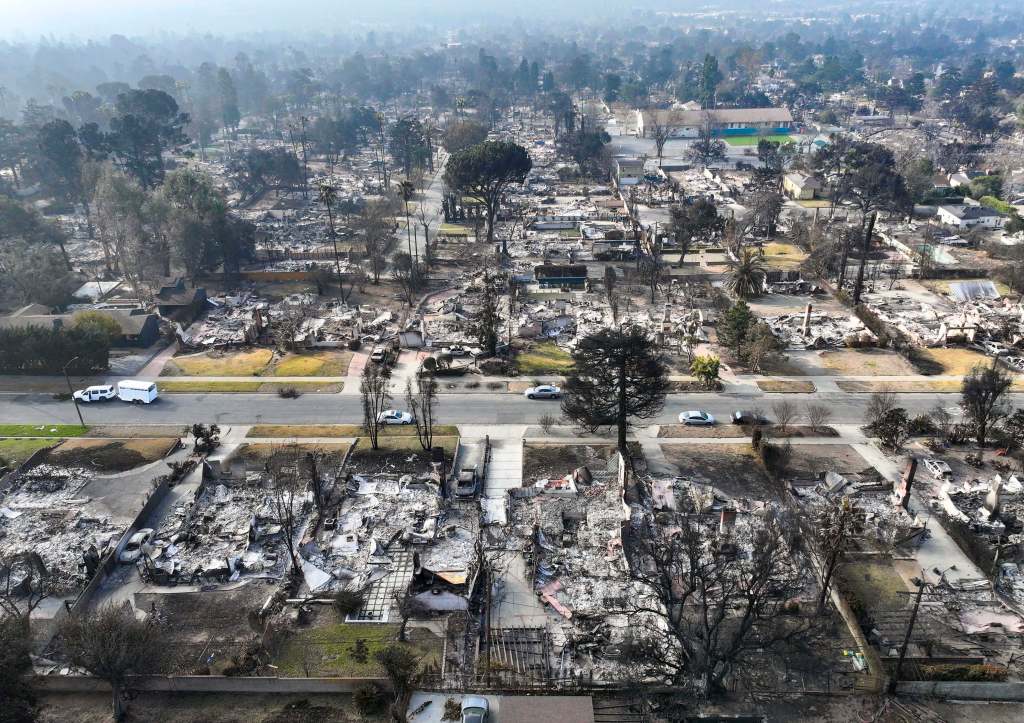
California is facing an insurance crisis. Insurance companies are pulling out, leaving businesses and consumers with too few options or soaring premiums. Many homeowners are turning in desperation to the FAIR Plan, the state’s insurer of last resort, which is now overwhelmed far beyond its intended capacity.
This crisis can be solved and California’s insurance markets can be repaired so that insurance is fair, affordable and readily available to everyone in California.
The solution starts with leadership that is clearly independent from the insurance industry. The Department of Insurance, and the Insurance Commissioner at its helm, must work effectively with insurers while maintaining total independence. Regulation serves the needs of the customer, not the producer.
First, pricing must be aligned with risk. The Department of Insurance is finally implementing its Sustainable Insurance Strategy, allowing insurance companies to use forward looking risk models and include the cost of reinsurance (a standard form of risk reduction). This is the right start, although the reforms are still going too slowly. But it is only the beginning.
A healthy market demands robust choice and competition. Without it, a handful of companies can jack up prices. The Department should make it far easier for insurers to enter the market and compete.
The biggest barrier to healthy competition is the excessive time it takes to approve standard rate applications. It helps customers to review rate applications to make sure they are proper; it harms customers to have them languish indefinitely. Nationwide, approval averages 60 days; in California, it’s nearly 300. Aligning California with the national average will give customers faster access to competitive rates and more choices.
As insurers return, most people will be able to leave the FAIR Plan, as they should. Recent experience with how poorly the FAIR Plan is handling smoke damage claims underlines why nobody should be forced to rely on a system that was only ever intended to be a last-ditch backup for a tiny number of customers. Over time, aligning prices with risk and fostering competition will restore fairness and market stability.
But we must do more than just trust the market. As the famous saying goes, one should trust but also verify.
The Department of Insurance should create an annual state insurance rates benchmarking report that compares California’s insurance rates to all the other Western states, factoring in the cost of living. This transparency will empower consumers and businesses to track how California compares to other wildfire-prone states. Insurance company profitability should also be tracked to make sure it is reasonable but not excessive.
The next step in solving our insurance crisis is to address the damage done by the increasing severity of wildfires, which is the root cause of rising costs. There are two key components: hardening homes and improving forest management.
The Board of Forestry is currently developing science-based standards called Zone Zero, which provide actions homeowners can take to make homes more fire resistant. Once those standards are finalized, homeowners should be provided appropriate incentives to make the necessary investments.
The Department of Insurance can help by ensuring homeowners insurance rates incorporate meaningful discounts for implementing Zone Zero. But these investments can cost a homeowner tens of thousands of dollars, so discounts on home insurance will not be enough.
Since everyone benefits from home hardening, it is appropriate for taxpayer grants to help finance it. Assembly Bill 888 by Assemblywoman Lisa Calderon is critical in this regard. It should be finalized and passed as soon as possible.
Finally, we must do everything possible to reduce wildfire severity by managing our forests better. California is too far behind the optimal level of controlled burns and other forest management actions that are needed. A recent analysis by UC Berkeley professor of fire science Scott Stephens highlights lessons California can learn from how Australia manages similar wildfire risk.
Taming wildfires will lower insurance costs and make it easier for insurance companies to do business in California. It will also protect property and, most importantly, save lives.
California has overcome big challenges before. With commitment and the right leadership, we can solve the insurance crisis, restore a healthy market, and protect our communities.
Patrick Wolff is a candidate for California Insurance Commissioner in the June 2026 primary.



